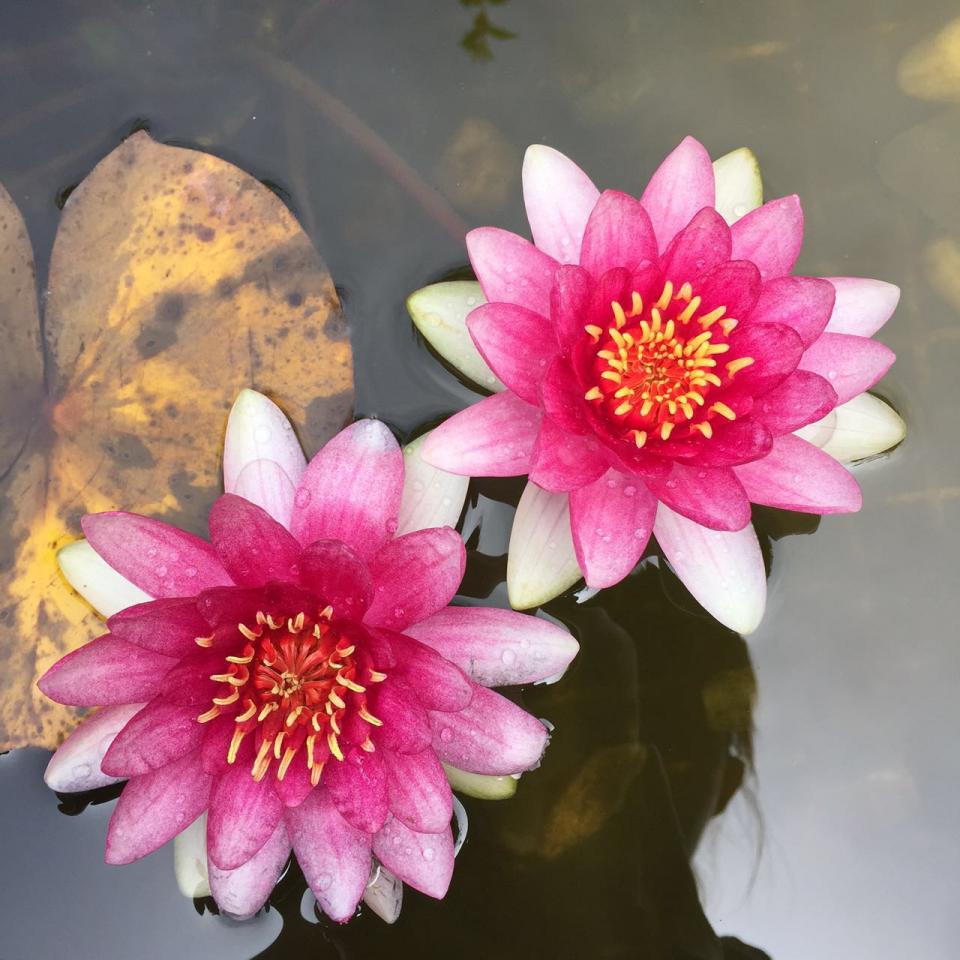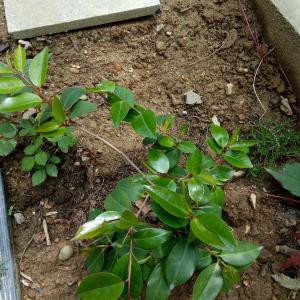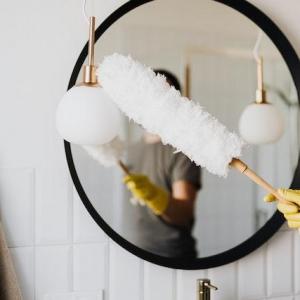Posts (175)
Zeev Kwan
2022-08-11

1. Overbathing
Because it is the most exposed part of your body, your skin is constantly being exposed to dirt, sweat, oil, dead skin cells, and germs. So that your skin can breathe and perform as it should, it is imperative that you take a bath on a regular basis to remove these impurities. In the hopes that the more you wash your skin, the cleaner and healthier it will be, you must not overdo this process. Bathing frequently or for an extended period of time might harm your skin and hair. Your skin and scalp get dry and itchy when they are repeatedly exposed to soap and water, which removes their natural lipids. It is advised to only take baths in cold or lukewarm water because hot water is extremely drying. Dry skin is less elastic and more likely to break. In the meantime, dandruff and general irritation are more common on a dry scalp. When your hair is exposed to water and shampoo on a daily basis, it also loses its shine and softness.2. Frequently exfoliating
Exfoliation gives your skin a deep clean by removing dirt from your pores. Additionally, it helps to eliminate the dead skin cells that have accumulated on top of your skin by loosening them so that the new, fresh skin beneath can be seen. Exfoliating too frequently or violently, however, can actually remove your skin's natural oils and even injure the delicate skin on your face. Therefore, it's crucial to apply it gently and no more than two or three times every week. If you have sensitive or dry skin, only do it once a week. Additionally, avoid scrubbing over active pimples as this may cause them to split and transfer the contagious pus to the nearby skin.3. Not cleaning your hands properly
Your hands gather up dirt and germs from numerous contaminated surfaces as you use them to touch and grasp objects. When you handle food while cooking or eating, you run the risk of ingesting germs that could cause gastroenteritis or other infections. Similarly, touching your face with dirty hands can spread germs to your skin and even into your mouth or nasal passages, leading to an infection. Therefore, it is crucial to maintain good hand hygiene. This calls for frequent hand washing with soap and water, especially after using the restroom, touching an animal, coming into contact with someone who has an active cough or cold, as well as before handling food.4. Cleaning your ears' inside with cotton swabs or Q-tips
The standard tools for removing wax buildup within the ear are cotton swabs or Q-tips, although doing so can be extremely risky and is being opposed more and more by doctors. To begin with, the ear cavity's inner walls are very delicate and are quickly harmed by these sharp things. Additionally, using a Q-tip too deeply might tear your eardrum and cause hearing loss by pushing wax further into the ear canal. Instead of pushing the Q-tip inside the ear, you should gently clean the wax and dead skin that have gathered on the outer edge of the ear. Before using any products, it is recommended to read the product label's directions and speak with your doctor.5. Excessive facial cleaning
A common misconception is that the more individuals wash their faces, the cleaner they will be. However, using too much water or cleanser can harm the delicate skin of your face. The sebaceous glands under the skin are stimulated by the lack of moisture to generate more oil to make up for the dryness. The extra sebum then clogs your pores, resulting in acne flare-ups. Overwashing your face can also throw off the skin's normal pH balance, which encourages bacterial growth. Washing your face twice a day, first in the morning and then at night, is advised by skin care specialists. After waking up, your skin is generally clear, so you can even skip the morning session. Avoid these common personal hygiene mistakes and try to learn the correct ways and measures to properly take care of your body.
Article
Zeev Kwan
2022-08-11

1. Prevention of Disease
Your chance of contracting diseases and ailments typically spread by viruses and bacteria is reduced by practising good hygiene. Every time you cough, use the restroom or touch a surface that is often touched by others, like a stair railing, your hands come into contact with bacteria. This bacteria can grow if you don't frequently wash your hands and body, which raises your risk of infection and other health issues. By keeping yourself clean and washing your hands frequently, you can get rid of bacteria that cause illness and reduce your risk of getting sick. Maintaining good hygiene is essential to preventing infection when wounds and skin irritation are present. Poor hygiene can cause dirt and other bacteria to enter skin wounds and remain there, whereas proper hygiene can keep these bacteria at bay to prevent infection.2. Acceptance in Society and the Workplace
Being around people who don't practise excellent hygiene can make you feel uncomfortable because of things like body odor and poor breath, and it raises your chance of being sick and infected. Your social life and relationships, especially professional ones, might suffer from poor hygiene. Many businesses encourage or demand that workers maintain proper hygiene, and they frequently prefer to recruit candidates who are tidy and who appear to have good hygiene practices. Children who maintain good hygiene will be less likely to experience bullying at school, as evidence points to poor cleanliness as one of the main causes of bullying. Parents who stress the value of excellent hygiene to their kids help them develop healthy habits early in life and protect them from bullies.3. More Self-Belief and Confidence
You can feel more confident and at ease, both physically and emotionally, by keeping yourself clean and well-groomed. Feeling dirty, oily, and unclean not only compromises your physical health but can also lead to uncomfortable, agitated, and anxious feelings. Your mood, your interactions with others, and how you feel about yourself can all be affected by poor hygiene. Maintaining good hygiene can increase your self-worth, and confidence, and make you appear more appealing to others. Maintaining good hygiene can help you succeed at work, at the gym, and in other situations where you need to be at your best.4. Pain Prevention
Maintaining basic hygiene might help you avoid contracting uncomfortable illnesses and infections. Chronic pain can lower overall quality of life and potentially result in co-occurring diseases like obesity and drug addiction. Maintaining good general health can help you prevent experiencing discomfort brought on by certain medical disorders. Regular dental brushing and flossing reduce the risk of gum disease, which in its advanced stages results in chronic pain and tooth loss. After working out, staying in wet, sweaty socks for several hours increases the chance of developing an athlete's foot, which can result in a fungal nail infection that hurts and inflames the area under the nails. Maintaining good hygiene will help keep you healthy and pain-free and can help prevent the emergence of medical issues like these. Maintaining good cleanliness has numerous advantages for your mental, emotional, and physical health and can keep you healthy.
Article
Zeev Kwan
2022-08-11

1. Always wash your face
Washing your face twice a day is necessary to eliminate pollutants, dead skin cells, and extra oil from the surface of your skin, whether or not you have acne. Washing more frequently than twice a day is not always preferable; it might even be detrimental. Use a gentle face cleanser and warm, not hot, water. Using a harsh soap, such as deodorant body soap, might irritate and harm skin that is already irritated.2. Moisturise
Always use a moisturiser that prevents dryness and skin peeling because many acne products contain components that dry out the skin. On the label, look for "non comedogenic," which denotes that it shouldn't result in acne. Moisturizers are available for dry, oily, and mixed skin types.3. Try an over-the-counter acne product
No prescription is required for these acne medications. The majority of them contain substances that fight bacteria and dry up your skin, such as benzoyl peroxide, salicylic acid, glycolic acid, or lactic acid. Start with a small amount at first as they may result in dryness or peeling. After that, you can modify how frequently and how much you use.4. Use minimal makeup
Avoid using blush, powder, or foundation while you have a breakout. If you choose to wear makeup, remove it at night. Select oil-free cosmetics without additional colours or chemicals, if at all feasible. Select makeup that is "noncomedogenic," which means it shouldn't worsen acne. Before making a purchase, review the ingredient list on the product label.5. Be careful with your hair products
On your hair, stay away from applying oils, pomades, scents, and gels. They might irritate and obstruct your skin's pores if they land on your face. Make use of a soft shampoo and conditioner. Washing your hair frequently is especially important if you're breaking out since oily hair can amplify the oil on your face. Have long hair? Attempt to keep it away from your face.6. Don't touch your face with your hands
Keep your hands away from your face and don't rest your cheek or chin on them. You risk irritating the already sensitive facial skin in addition to potentially spreading bacteria. Never use your fingers to squeeze or pop pimples because doing so can cause infection and scars.7. Relax!
According to research, stress is related to how bad acne or pimples are. What is it that is stressing you out? Figure it out and look for solutions. If in doubt, consult a dermatologist to determine whether you require additional therapy to prevent acne.
Article
Zeev Kwan
2022-08-11

1. Eggs
Protein and biotin, two elements necessary for hair growth, are both abundant in eggs. Since protein makes up a large portion of hair follicles, eating enough protein is crucial for healthy hair growth. It has been demonstrated that a diet low in protein accelerates hair loss. Biotin supplements are often recommended for hair growth since biotin is necessary for the production of keratin, a hair protein. More biotin consumption has also been linked to better hair development in those with biotin deficiencies, according to research. Being a fantastic source of zinc, selenium, and other hair healthy nutrients, eggs are one of the best foods to consume for healthy hair.2. Berries
Berries are filled with healthy compounds and vitamins that could promote hair growth. Included in this is vitamin C, which has powerful antioxidant properties. Antioxidants can aid in defending hair follicles from damage caused by harmful molecules known as free radicals. Both the human body and the environment naturally contain these molecules. A protein called collagen, which is produced by the body using vitamin C, helps thicken hair to keep it from becoming brittle and breaking.3. Spinach
Spinach is a nutritious green vegetable that is rich in vitamins A and C, iron, folate, and other minerals that are crucial for hair growth. According to studies, vitamin A is essential for hair growth. However, taking too much vitamin A can result in hair loss. By consuming meals high in this vital ingredient, you should be able to obtain all the vitamin A you require. Spinach is another excellent plant-based source of iron, which is necessary for the growth of hair.4. Fatty Fish
Nutrients found in fatty fish like mackerel, herring, and salmon may encourage hair growth. They are great providers of omega-3 fatty acids, which research has shown to promote hair growth. Taking a supplement containing omega-3 and omega-6 fatty acids as well as antioxidants decreased hair loss and enhanced hair density, according to an older study involving 120 women. In addition to being an excellent source of protein, selenium, vitamin D3, and B vitamins, fatty fish also contains other nutrients that may support strong, healthy hair.5. Sweet Potatoes
Beta-carotene is abundant in sweet potatoes. This compound is transformed by the body into vitamin A, which is associated with healthy hair. Up to 160 percent of your daily vitamin A requirements can be met by a medium sweet potato of about 114 grams. According to studies, vitamin A may have an impact on sebum production, which contributes to the health of hair. Eat foods high in vitamin A, such as sweet potatoes, to meet your needs, and avoid excessive supplementation.6. Nuts
Nuts are delicious, convenient, and full of nutrients that are vital for healthy hair growth. A wide range of B vitamins, zinc, and vital fatty acids are also included. Any of these vitamin deficiencies have been associated with hair loss. Along with aiding in hair development, nuts have been linked to numerous other health advantages, such as lower risk of heart disease and reduced inflammation. Because of this, nuts are a great and simple addition to your diet.Conclusion
Your hair's health may be impacted by what you consume. Vitamins A, C, D, and E, zinc, B vitamins, iron, biotin, protein, and essential fatty acids are some of the nutrients that are needed to support healthy hair growth and prevent hair loss. Fortunately, treating a vitamin deficiency in any of these nutrients may assist in treating hair loss and speeding up hair development.
Article
Zeev Kwan
2022-08-11

1. First, properly remove all of your makeup
Before you begin cleansing, especially before bed, use a mild makeup remover to get the job done. Pores are accustomed to eliminating pollutants over night, so if they become blocked, everything will back up and appear clogged. And even if you've got quite the resilient outer layer, this is true for all skin types.2. Avoid washing your face with harsh bar soap
Bar soaps have the potential to change the pH balance of the skin, which promotes the growth of more bacteria and yeast, unless they are specifically made for the face. It comes as no surprise that facial cleansers—particularly cleansing balms—are designed for sensitive skin.3. Use lukewarm water
Let's bust a misconception: Pores are not doors. Cold water doesn't close them, and hot water doesn't open them. The reality is that it's ideal to maintain a moderate water temperature because going too hot or too cold might irritate skin. When you look in the mirror, you shouldn't see red skin.4. Try out micellar water
Micelle-containing water contains molecules that cling to and break down cosmetics and other debris. Micellar water can effectively cleanse your skin without the need for rinsing, so some people, especially those who don't wear makeup, can get away with using it as their primary cleanser.5. Avoid using unnecessary tools
Unless you are cautious about regularly cleaning them in a bleach solution, studies suggest that the amount of bacteria that accumulates on loofah sponges is evidence that these may not be a good idea. Simply use your hands as tools.6. Bear in mind your jaw and neck
Your neck and jawline are prone to dirt and debris accumulation. And they too require love. To stimulate circulation and help your skin stay tight and naturally lifted, gently rub your fingers upward while massaging your face to remove makeup and dirt.7. Dry with a gentle cloth
Time to reconsider using air drying. Leaving water to drip on your face won't hydrate it; in fact, it could cause dryness after the water evaporates. Remember to pat gently and very carefully around the delicate under-eye area with a soft, antimicrobial towel.8. Avoid over-washing your face
According to research, keeping your circadian rhythm in check may help shield your skin from harm. Especially people with dry skin should consider cutting back on washes.9. Use a toner
Although not strictly a step in face washing, many people often overlook the significance of rebalancing your skin. Toners are light liquid formulations that were originally used to restore the pH of your skin so that it could defend itself against infection and damage. Nowadays, many toners have added advantages that address particular problems.10. Do not forget to moisturise
Make sure you're keeping your skin hydrated in addition to toning. Some people enjoy how "tight" their face feels after washing it, but this is an indication of excessive dryness. Consider switching cleansers if your skin feels dry after washing all the time. Choose a gentle cleanser or one that contains oil.Takeaway
All of this is to imply that washing is only the first step in preserving the health of your skin. The remaining steps depend on all the other serums, moisturizers, mists, face masks, and so forth. Additionally, your diet, exercise routine, and stress levels all have an impact on your skin and overall health.
Article
Zeev Kwan
2022-08-11

1. Tomato
When it comes to skincare and beauty, tomato is a wonderful ingredient. It contains antioxidants and vitamin C, which help in the growth of collagen in the body. It helps protect skin from pollution, sunburn and lycopene present in tomato functions as a natural sunscreen. Additionally, it promotes the development of new cells and aids in the battle against cellular damage.Usage:
Mash a tomato, separate its pulp and apply its juice on the affected areas or all over the face. Keep it for 15 minutes and then rinse with water. Use this method twice a week. Not only will it get rid of tanning, but it will also make your skin glow.2. Gram flour
Your skin benefits greatly from gram flour. By combining it with other ingredients, it can be used to remove tans. It can also be used as a scrubber to remove tan from the neck and arms because it brightens and lightens your skin tone. It enhances your skin's radiance and helps to rejuvenate your skin. Gram flour eliminates dead skin cells and absorbs pollutants.Usage:
A face pack made with gram flour and a dash of turmeric can provide great results. The medicinal properties of turmeric help to brighten skin tone and remove tan. Take 3 tablespoons of gram flour, 1 teaspoon of olive oil and lemon juice in a bowl. Add a small amount of turmeric powder. Apply the mixture on the affected areas after thoroughly combining the ingredients, and allow it to dry for 10 to 15 minutes. With lukewarm water, wash it off. For best results, do this process twice a week.3. Honey and Curd
Curd works as a natural bleaching agent and aids in eliminating pigmentation. Curd's natural acids and enzymes aid in skin exfoliation and cooling. Honey also has antibacterial and anti-inflammatory properties. It contains antioxidants that can repair skin damage caused by the sun.Usage:
Mix 2 tablespoons of curd with 1 tablespoon of honey. Blend them together, then gently spread a thick layer over your skin. After 15 minutes, rinse it off with lukewarm water. It is suggested that you do it every day.4. Aloe Vera
Due to its numerous skin and beauty benefits, aloe vera is one of the most popular ingredients. It helps to make your skin look more radiant and shields your skin from sun damage. It is a medicinal plant that calms your skin and effectively treats tanning thanks to its antibacterial and anti-inflammatory properties.Usage:
Applying aloe vera gel before night is a good idea. A freshly cut aloe vera leaf can be used to extract the gel, or the gel can be purchased. The gel should be applied thickly to your skin at night and then washed off in the morning. For best results, do this repeatedly every day.5. Milk and Cucumber
Cucumber works as a cooling agent and aids in skin renewal. Because it is a strong source of vitamin C, which calms your skin after sunburn, it also fades sun tan. Antioxidants included in it are abundant, which helps to clear your skin and provide a cooling impact. Whereas milk works as a sunblock and a hydrating agent. It not only evens out skin tone but also shields your skin from sunlight and damage. The mixture is incredibly effective at removing tans.Usage:
Extract cucumber's juice by blending it. Mix in some raw milk. After applying the mixture on your skin, wait 15 to 20 minutes. Use regular water to rinse it off. Use it twice daily to see effects right away.
Article
Zeev Kwan
2022-08-11

1. Aloe Vera Face Mask
This summer, aloe vera has to be one of your go-to ingredients. Aloe vera's calming qualities might lessen inflammation and redness. The antioxidant booster we all need could be as simple as adding a squeeze of lemon. Lemon should be avoided, though, if you have sensitive skin and active acne. Add 1 tablespoon of lemon juice to 2 tablespoons of aloe vera gel. Apply on your neck as well as the rest of your face. Wear the mask and unwind for no more than 10 minutes. With lukewarm water, thoroughly rinse off the aloe vera mask. After patting yourself dry, apply a hydrating moisturiser.2. Multani And Face Mint Mask
Do you recall how your grandmother would urge you to apply "multani mitti" to your face? Well, the traditional product keeps up its legacy. Multani mitti has some of the most powerful cooling properties, which lessen inflammation and dark circles. The mint whereas can clean your pores of dirt. The richness of all the ingredients in your kitchen is in this face mask. Mix one tablespoon of multani mitti with one tablespoon each of milk and rose water. Mix everything together after making a paste out of several mint leaves. If the texture still seems too dry, add a bit more rose water until it resembles a paste. From your forehead to your neck, apple the face mask. For some de-tanned arms, you can even lather it on your arms. Allow the mask to dry for 15 minutes. Use warm water to wash the mask off. Moisturize after toning.3. Cucumber and Yogurt Face Mask
Cucumbers can be the summer's star ingredient, whether they are in your water or on your skin. In addition to reducing dark circles and soothing sunburns, cucumbers also have a cooling effect. Yogurt, on the other hand, can lessen acne and pimples as well as soothe itchy skin. Your summer problems can really be solved by combining these. Fresh cucumber pulp and 1-2 teaspoons of plain yoghurt should be combined. Using a brush or your fingertips, spread it all over your face. Spend 20 minutes wearing the face mask before rinsing.4. Rose Water and Sandalwood Face Mask
The best antiseptic to treat wounds is sandalwood. But did you know that it can cure your tan and sunburn, which were brought on by the intense heat? Due to its cooling properties, sandalwood can lessen inflammation and redness. Rosewater, the original face toner, is full of antioxidants that can improve your skin and lift your spirits. The pair has ingredients that can combat acne and dry skin. It is therefore ideal for all skin types. Make a paste by combining 1 tablespoon of sandalwood or Chandan with rose water. Apply it to your face and leave it on for 15 minutes. After rinsing with lukewarm water, apply a toner and moisturiser.5. Coffee Face Mask
Coffee lowers puffiness, and the granules may help remove dead skin cells. The honey in the mixture might offer more radiance. This will be your favourite summer face pack if you love the aroma of coffee. To make a paste, combine 2 teaspoons of coffee, 1 tablespoon of honey, and 1 tablespoon of milk. Apply it to your entire face and leave it on for fifteen minutes. Use lukewarm water to rinse, then pat yourself dry and moisturise. Try these amazing natural cooling face masks this summer and witness a glowing, hydrated and healthy skin.
Article
Zeev Kwan
2022-08-11

1. It Can Eliminate Harmful Microorganisms
Coconut oil contains medium-chain fatty acids that have antimicrobial properties which can aid in warding off harmful microorganisms. Since many skin infections, such as acne, cellulitis, folliculitis, and athlete's foot, are brought on by bacteria or fungi, maintaining good skin health is extremely crucial. Direct application of coconut oil to the skin might stop the growth of these microorganisms. This is because coconut oil contains lauric acid, which can fight harmful microorganisms and accounts for roughly 50% of the fatty acids in coconut oil. In one study, 20 different bacterial strains were used to investigate the effectiveness of 30 different types of fatty acids as antibacterial agents. Lauric acid was discovered to be the most effective at preventing bacterial growth. Lauric acid can kill off Propionibacterium acnes, a type of bacteria that causes the onset of inflammatory acne, according to another test-tube study.2. Coconut Oil Might Help With Inflammation
Psoriasis, contact dermatitis, and eczema are just a few of the many types of skin illnesses that frequently involve chronic inflammation. It's interesting that anti-inflammatory effects of coconut oil have been demonstrated. In one study, experts used virgin coconut oil to treat rats' inflamed ears. It was discovered that coconut oil not only reduced inflammation but also pain. Coconut oil may also reduce inflammation by boosting antioxidant status. Antioxidants function by neutralising the reactive atoms known as free radicals in the body, which can cause inflammation.3. Using Coconut Oil To Treat Acne
Although some people believe coconut oil clogs pores, extensive evidence suggests it may really help heal acne. Being an inflammatory condition, acne is often treated with drugs that target and reduce inflammation. Acne treatment may benefit from coconut oil and its components since they may lessen bodily inflammation. Additionally, the medium-chain fatty acids in coconut oil may aid to lessen acne because of their antimicrobial qualities. Lauric acid, which makes up over half of the fats in coconut oil, has been shown in numerous studies to be effective in killing the type of bacteria that causes acne.4. Dry Skin Can Be Moisturised By Coconut Oil
Applying coconut oil on your skin has benefits for inflammation and acne, in addition to keeping your skin nourished. One study compared the effects of coconut oil to mineral oil, a type of petroleum-based oil frequently used to treat dry skin, in patients with mild to moderately dry skin. Coconut oil dramatically increased skin hydration during the two-week research and was just as efficient as mineral oil. Additionally, it has been proven to aid in the treatment of eczema, a skin condition characterized by scaly, itchy rashes. Keeping your skin hydrated can aid in maintaining the integrity of your skin overall, the healing of scars, and the preservation of your skin's barrier function against bacteria.The conclusion
Although coconut oil's health advantages have been extensively researched, the majority of studies on how it affects the skin use test tubes or animals. However, coconut oil may have some potential advantages for skin, such as lowering inflammation, maintaining skin moisture, and promoting wound healing. The medium-chain fatty acids in coconut oil have antibacterial qualities that can help treat acne and shield the skin from noxious microorganisms.
Article
Zeev Kwan
2022-08-11

1. Acne control
Lauric acid present in avocado has antimicrobial and anti-inflammatory properties which aid in the treatment of acne. Avocado's moisturising abilities may shield against dryness, which is a frequent cause of acne and ageing. For treating acne, avocado combined with oats and lemon work well. Oats aid in bacterial cell removal and inflammation reduction while lemon is a great bleaching agent.How to use:
Combine one avocado's pulp with 2 tbsp of ground oats and a few drops of lemon. Apply this paste to your face. At the end of 30 minutes, rinse it off with cold water. Use this cure four times each week. Combine 2 tablespoons of cucumber juice and ½ cup of avocado pulp. Apply this paste to a clean face and let it sit for 10 to 15 minutes before washing it off with warm water.2. Antiaging
Oleic acid found in avocados is anti-inflammatory which reduces skin redness, prevents wrinkles, and fights inflammation. Additionally, avocados contain vitamins C and E which are very good for your skin. Avocados are a good source of antioxidants like lutein and zeaxanthin, which prevent the impacts of free radicals, which are the cause of premature ageing.How to use:
Use by blending 1 teaspoon of coconut oil into the avocado slice's pulp. Apply the paste to your skin. After 30 minutes, wash it off. Use this treatment consistently for soft, young-looking skin.3. Moisturizing the skin
Avocado oil, which is rich in vitamins A, D, and E provides your skin with deep hydration and moisturization. Moreover, avocado oil helps soothe the skin, promote skin healing, and protect against sun damage. Avocados' linoleic and oleic acids also aid in skin healing and restoration.How to use:
Apply a thin layer of the mashed avocado slice to over your skin. After ten to fifteen minutes, rinse it off with warm water. Mix half an avocado, egg yolk, and ½ cup of yoghurt. If desired, add a few drops of lavender or rose essential oil into the mixture. Avoid your eyes when applying the paste to your skin. Apply a second layer of the paste after waiting for five minutes. After ten minutes, rinse it off.4. Exfoliating the skin
Avocados' mineral and antioxidant content make them a gentle exfoliator for the skin. Dead skin cells, excess oil, and clogged pores can all be removed from the skin by applying avocado to it. Additionally, avocados nourish skin, promoting skin renewal and regeneration.How to use:
Combine 2 tbsp of coconut or almond oil with a slice of avocado. Add 1 tbsp of brown sugar to this paste. Gently massage your skin with this mixture, paying special attention to rough spots like the knees and elbows. With warm water, wash it off. To exfoliate your skin, use avocado seeds or pits. Simply peel out the seeds' skins and grind them into powder. Combine one tablespoon of this powder with one tablespoon of honey and olive oil. Massage this mixture over your skin and wash it off after 15 minutes. Use this scrub once a week to make your skin softer.5. Sunburn Treatment
Your skin can become damaged by too much sun exposure, which can sometimes result in sunburn. Applying avocado to sunburned skin helps ease the skin's discomfort and minimise redness and inflammation. Avocado's ability to treat sunburns is mostly attributed to its protein, lecithin, beta carotene, and vitamin D and E content. Avocados also promote skin healing and skin hydration.How to use:
Mix half an avocado with ½ tablespoon of lime juice and 1 tablespoon of yogurt. After applying this mixture over the affected areas for 15 minutes, wash it off. Because avocado oil has a high SPF, use it to treat sunburns. Apply a solution made from 5 drops of avocado oil and 3 tablespoons of aloe vera gel on the skin that needs treatment. While commonly used for internal consumption, avocados can also be effectively used to treat skin problems and to provide a natural glow to the skin.
Article
Zeev Kwan
2022-08-11

1. Washing
Because it spends most of the day covered in socks and shoes or exposed to dirt and grime, the skin of the feet is most vulnerable to bacterial and fungal infections. If it is not properly washed and sanitised, the skin between the toes is the ideal environment for bacterial and fungal illnesses to grow. Washing your feet with soap once a day is vital to make sure that sweat and dirt that has been trapped there are removed.2. Preserving Dryness
Itching, burning, skin peeling, and sometimes painful blisters are all symptoms of the common fungal infection known as athlete's foot, which affects the feet. For fungi like athlete's foot to flourish, dampness is the ideal setting. Every time you wash your feet, you must thoroughly dry them, paying particular attention to the space in between your toes, especially if you plan to put on socks and shoes right away.3. Moisturising
Don't restrict your moisturising to just your hands and face. Your feet's skin might become chapped, dry, and scaly from a lack of moisture. When this happens, the skin can become very dry and rough, especially on the heels. Dirt and grime will start sticking to it since this area turns into a magnet for them. Chapped heels can be uncomfortable in addition to looking unpleasant. Every day after washing your feet, make sure to moisturise your feet generously. Petroleum jelly and cocoa butter are both suitable alternatives.4. Removing Rough Skin
It will be useless to moisturise dead skin. It's crucial to first exfoliate the dead layer once a month. Loofas or pumice stones can be used for this, but gently. It also aids in removing the dirt and grime clinging to the dried-out dead skin. Follow it with a nourishing moisturiser and leave it overnight. Another option for scrubbing is to combine sugar and olive oil, adding a few drops of tea tree or mint oil for antibacterial effects.5. Putting Up Socks
Not only is it vital to wear socks to stay warm, but also to protect your feet from environmental harm. The feet are protected by socks from dust and filth that could cling to the cream used on the feet. They also shield against UV rays.6. Wearing Comfortable Shoes
Always wear comfy shoes, never anything else. Wearing tight shoes might cause skin infections or sores; therefore, avoid doing so. Also, stay away from frequently wearing high heels as this could harm your feet's ligaments and tissues. For ease of movement, keeping your feet healthy is crucial, but fortunately, they require very little maintenance. To maintain their optimum appearance and functioning, all you have to do is keep them clean, moisturised, and well-rested.
Article
Related Users
Elite Article
























